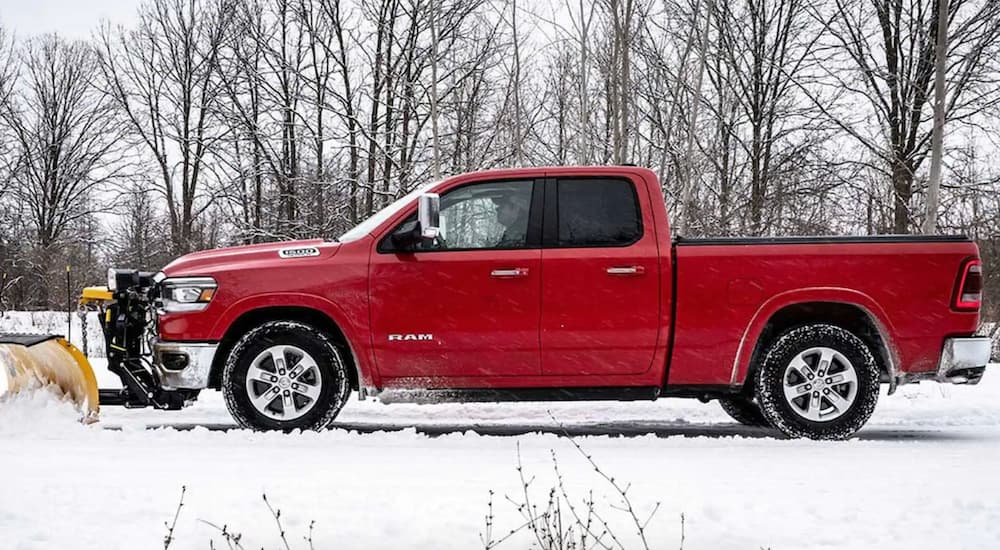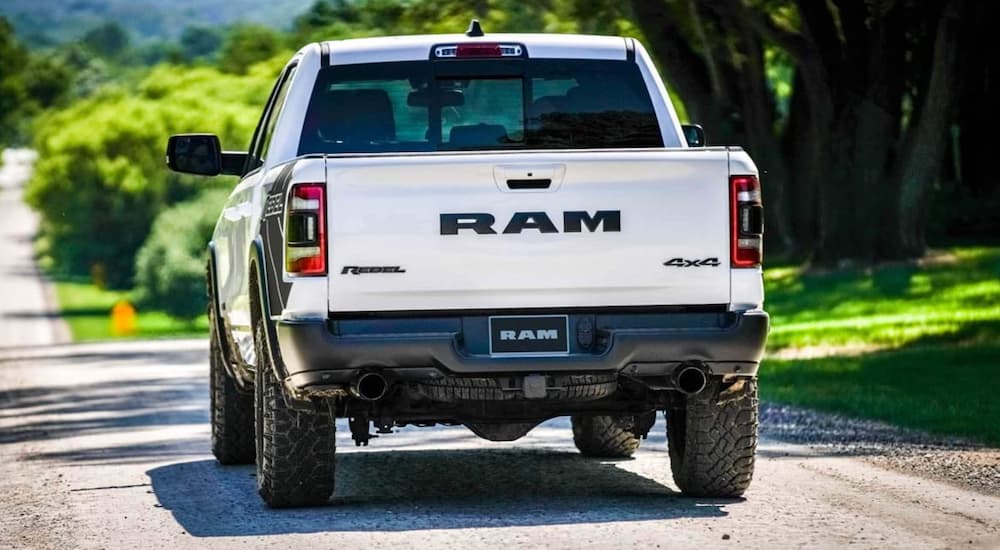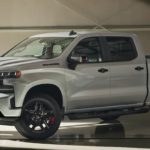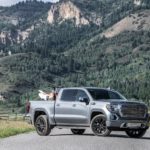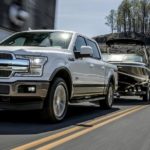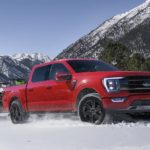The Ford F-150 has dominated the marketplace for many years. Ford’s light-duty truck series, in particular, has been one of the biggest sellers over the years in North America. Ford has usually managed to edge out the competition thanks to great fuel economy and some of the best tow ratings around. But Ram trucks have been extremely aggressive in recent years to change the landscape. They’re not gunning for fuel economy ratings, not by a longshot. They have, however, been aiming to dethrone the F-150 in the power game. But how well does the Ram perform when it comes to generating power versus Ford? Well, that’s what we take a look at today with this 2021 Ram 1500 vs 2021 Ford F-150 showdown.
Base Powertrains
The base powertrains for both the Ram and Ford F-150 for the 2021 model years are ample enough. They’re designed to get the job done and provide some decent powerplant performance for their light-duty hosts. The 2021 Ford F-150 comes equipped with a 3.3-liter twin-independent variable valve timing V6 that produces 290 horsepower with 265 pound-feet of torque. An admirable base engine.
The 2021 Ram 1500 comes equipped with the veritable Pentastar. This is a 3.6-liter V6 with variable valve timing that houses eTorque technology. The base rating is 305 horsepower at 260 pound-feet of torque. Interestingly enough, you might assume the F-150 has the advantage in torque (even if by a smidgen) while the Ram has the advantage in horsepower (even if by a decimal). However, things change up when you consider that the Ram is actually designed to make better use of its torque at lower revolutions than the F-150.
This is all thanks to the eTorque system, which replaces the alternator in the Ram 1500 with a hybrid system that doles out additional power at lower speeds thanks to a 48-volt, 430-watt battery pack. This system doesn’t change the total torque output but instead delivers the torque more quickly with fewer revolutions. In turn, this makes the Ram capable of utilizing more of its 260 pound-feet of torque in the base Pentastar at lower speeds, giving it an extra leg up in off-the-line performance.
By comparison, the 2021 Ram 1500’s 3.6-liter with eTorque nabs a 0 to 60 rating of 6.6 seconds, versus the 2021 Ford F-150’s 3.3-liter V6 that manages to hit 0 to 60 in 7.3 seconds. So even if the differences between the torque figures seem small, you can see how the eTorque distributing 90 pound-feet of assistive torque at lower revolutions helps with acceleration. So interestingly enough, in this case, it’s not about the F-150 having slightly more torque, but the Ram 1500 utilizing what torque it has in a more efficient way.
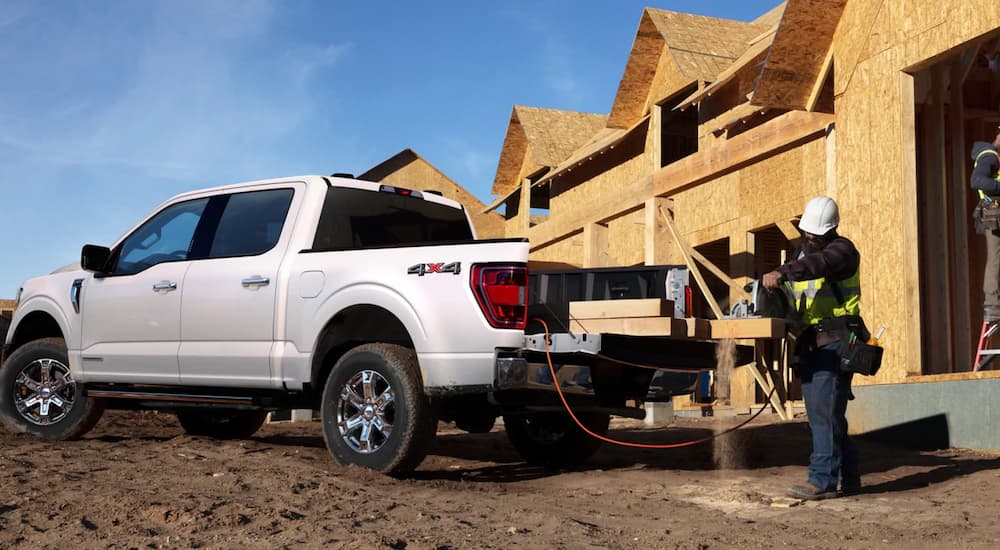
Diesel Options
Out of the seven available powertrains for the 2021 Ford F-150 and the five available powertrains for the 2021 Ram 1500, both offer a diesel option for various trims. It’s become a standard these days for a light-duty to have at least one turbo-diesel in the line-up, and Ford and Ram didn’t disappoint in this area. In terms of which has the better diesel, well, let’s look at the stats.
The Ford F-150 delivers its option through a 3.0-liter Power Stroke V6 turbo-diesel engine. The engine surpasses many of the other powertrain options with its raw torque of 440 pound-feet delivered at just 1,750 revolutions per minute. It tops out its horsepower output of 250 at 3,250 revolutions per minute. It’s a workhorse of an engine with some impressive stats.
On the Ram side, the 1500 has access to the optional 3.0-liter turbocharged, third-generation EcoDiesel V6. It manages 260 horsepower at 3,600 revolutions per minute while producing 480 pound-feet of torque at just 1,600 revolutions. On paper, it looks like the Ram easily takes this one, especially on the torque front. Higher torque output requiring nearly 9% fewer revolutions to reach said output certainly puts the Ram ahead of the F-150.
While this article is mostly strictly talking about the power aspects of both powertrains, the torque and horsepower advantage does give the EcoDiesel V6 the advantage in overall towing capacity, too. The Ram 1500 edges out the F-150 in the diesel towing capacity at 12,560 pounds, whereas the F-150’s diesel tops out at just 12,100 pounds. The 2021 Ford F-150’s Power Stroke turbo-diesel is just no match for the 2021 Ram 1500’s EcoDiesel.
Hybrids
The hybrid category is an interesting one, as different automakers are approaching this category in different ways. Ford has been at the forefront of light-duty hybrid technology for years, and this could be an added reason why it’s selling so well above and beyond the competition. Even still, the Ram is still in the hybrid competition thanks to its eTorque offerings. But how well does it stand up against Ford’s hybrid engines?
The 2021 F-150’s ace-in-the-hole is the 3.5-liter PowerBoost V6 hybrid engine. It delivers 430 horsepower and 570 pound-feet of torque. It utilizes an electric motor powered by a 1.5 kilowatt an hour lithium battery back with traditional combustion power to achieve its performance ratings. The hybrid six-cylinder attempts to hit multiple birds with one stone, from fuel economy to towing capacity. But how does it measure up against Ram’s offerings?
Well, we already talked about the base eTorque hybrid engine for the Ram 1500. But does the Ram have another engine up its sleeve to compete with the optional 3.5-liter PowerBoost V6? Well, in fact, it does. A 5.7-liter Hemi V8 with variable valve timing and eTorque technology is also available for 2021 model years. It contains a 48-volt belt-driven generator powered by a battery pack that provides up to 130 pound-feet of near-instantaneous launch torque. In total, it delivers 395 horsepower and up to 410 pound-feet of torque.
In this category, the Ford F-150 by far takes the crown here. Even if you compare the off-the-line performance times of 0 to 60, the Ram 1500’s 5.7-liter V8 Hemi eTorque engine is about 0.7 seconds slower than the 3.5-liter PowerBoost V6 hybrid turbo engine. Added to that, the upper-end hybrid option for the F-150 delivers more horsepower and more torque. But the battle isn’t over yet.
Maximum Power
We’re at the point where we take a look at the maximum power output by both trucks. What are they capable of doing at the top-end of their trim selections, and who will walk away as having the most powerful truck in the 2021 Ram 1500 vs 2021 Ford F-150 showdown? Well, anyone who has been following the news probably already knows the outcome of this one. It’s no surprise that there’s likely going to be a rather lopsided outcome, but let’s not waylay any longer and get right to the numbers.
You might be convinced that the 2021 Ford F-150’s most powerful engine would be the large 5.0-liter V8 engine, but it’s not. In fact, the V8 is actually one of the weaker powertrains available for the 2021 model year Ford. Surprising? Given Ford’s recent history of how they’ve been delivering power to the F-150, not really.
However, that leaves us with the question of what is the most powerful engine that the 2021 model year has to offer? It’s actually the 3.5-liter EcoBoost turbo-charged high-output V6 engine matched with the F-150 Raptor trim. It manages 450 horsepower and 510 pound-feet of torque thanks to twin-turbos providing a compression rate of 10.5:1. Impressive, eh?
Well, the twin-turbo 3.5-liter EcoBoost is matched up against the 2021 Ram 1500 TRX’s supercharged 6.2-liter Hemi V8 SRT. The TRX’s 6.2-liter Hemi V8 produces an immense 702 horsepower with an absolutely breathtaking 650 pound-feet of torque. It’s safe to say that when it comes to delivering maximum power, these two trucks may as well be in two completely different classes. The Hemi V8 SRT manages to produce nearly 36% more horsepower than its EcoBoost rival and generates nearly 21% more torque. The numbers here aren’t even close, and in the 0 to 60 miles per hour targets, the 6.2-liter Hemi V8 SRT manages to hit its mark in 4.5 seconds.
Powerful Victory
It’s pretty obvious that on most accounts, the more powerful truck between the 2021 Ram 1500 vs 2021 Ford F-150 falls in favor of the Ram. Across the base and diesel line, the Ram shows higher or better performance capabilities. On the hybrid front, the F-150 takes the lead because it has a full-hybrid engine. However, on the maximum power front, even with the twin-turbocharged Raptor, it just doesn’t have the specs or capabilities to match up to the TRX’s Hemi-powered V8.
